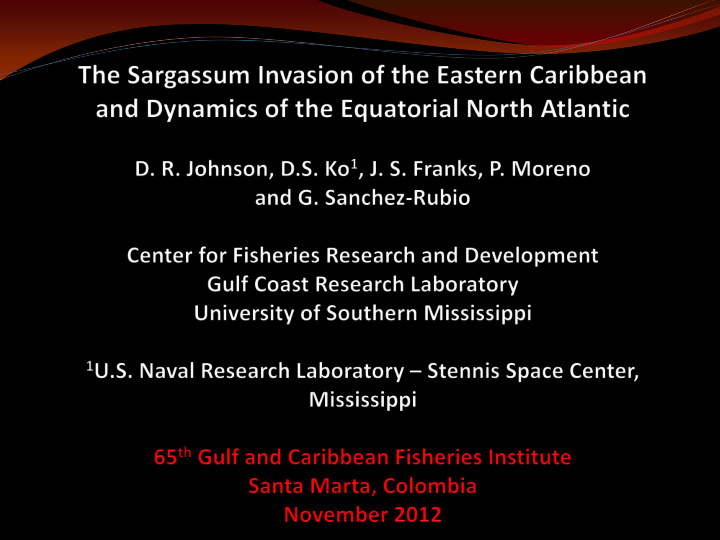



Backtracked sargassum movements from landfall locations to region off Brazil using IASNFS circulation model. Presented at 64 rd GCFI 2011, Franks et al.
Ingredients For Pelagic Sargassum ‘Bloom’ and Invasion • Seeded area (asexual reproduction) • High nutrients • Time to grow • Dynamic environment to accumulate
Currents from satellite tracked drifters 1979-2011 >20cm/s
Accumulation Accumulation Growth Growth Sporadic accumulation High growth
Amazon/Orinoco/Congo outflow Equatorial Upwelling West Africa Upwelling Warmest waters in Atlantic MODIS Chlorophyll Summer 2011
African dust: Nitrogen, Phosphorus, Iron
Satellite tracked current drifters that entered black box in 2010-2011. Green squares are starting points. 40% of drifters spent > 6 months in box. Between 500-20,000 times the biomass .
High Pressure ITCZ
Northward displacement of ITCZ High pressure Azores Sea surface temperature http://www.esrl.noaa.gov/psd/data /climateindices/list/
Summary North Equatorial Recirculation Region (NERR) most likely ‘bloom’ location. North Atlantic Equatorial Counter Current North Brazil Current Retroflection Contains ingredients needed for bloom: Seeded area – pelagic sargassum all over N. Atlantic High nutrient input – River inflow, upwelling, African dust Time to grow – Recirculation region with multi-year time scale Accumulation – eddy formation of mats and lines NERR affected by Hadley Cell ocean/atmospheric interaction ITCZ latitude and intensity North Atlantic air pressure Sea surface heating Year 2011 unusual in climate indices – likely from wild swings in climate due to global temperature increase.
Recommend
More recommend